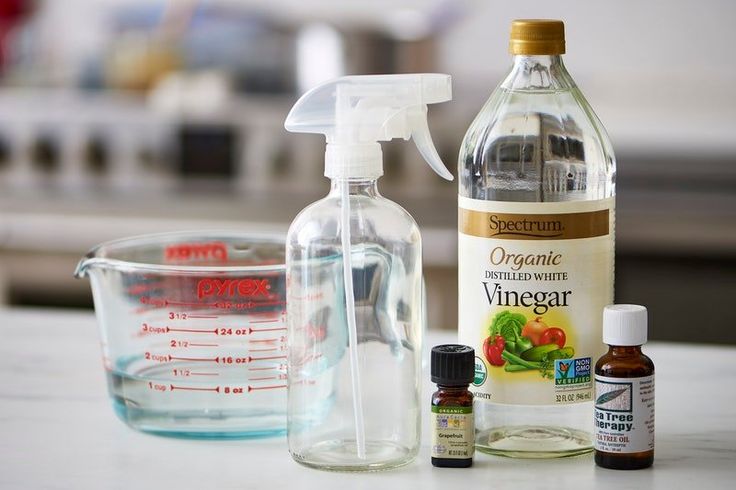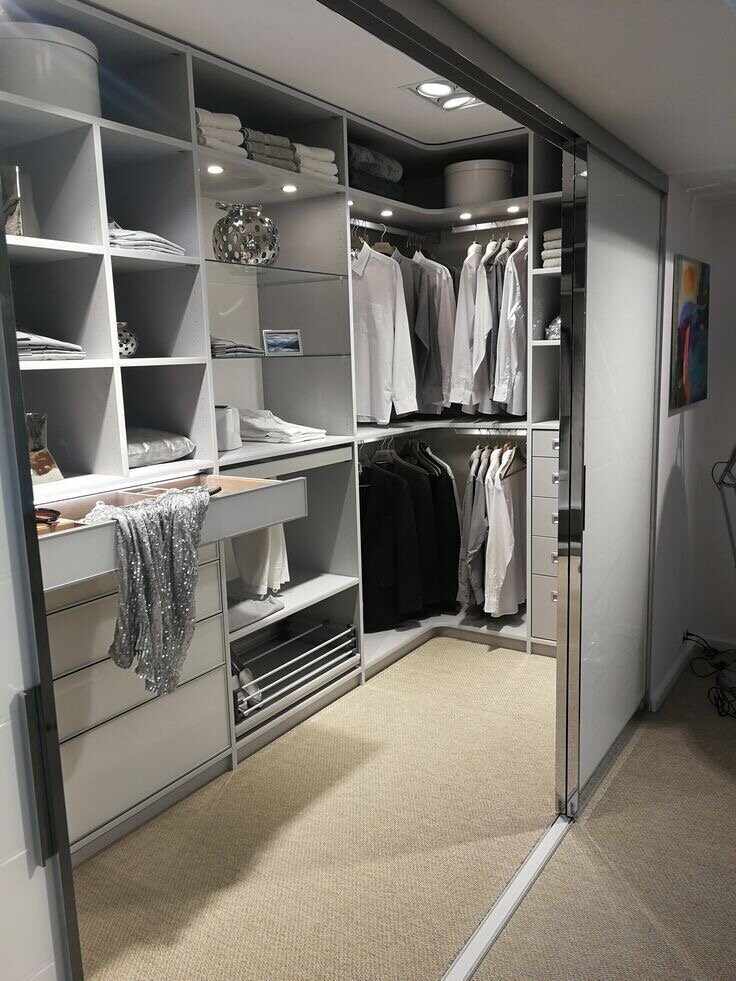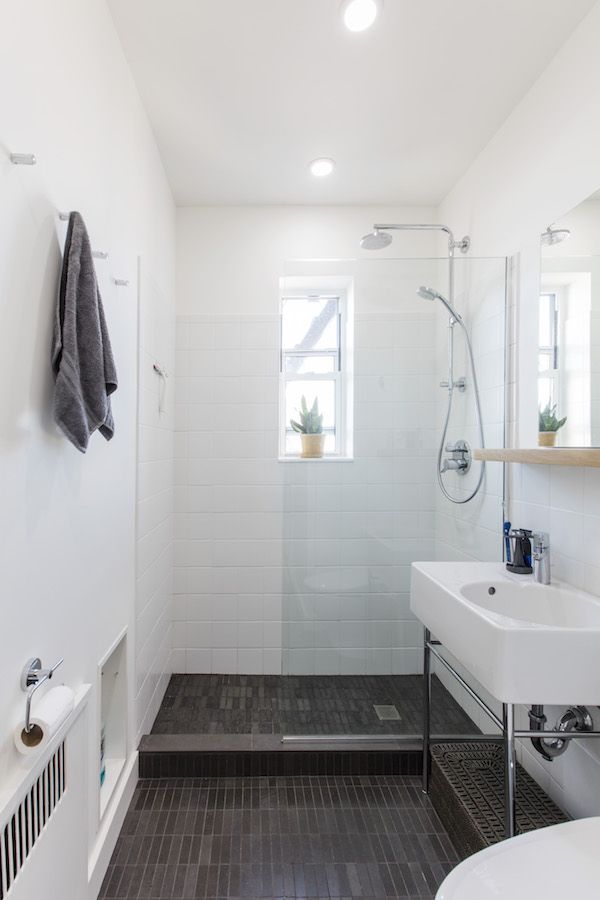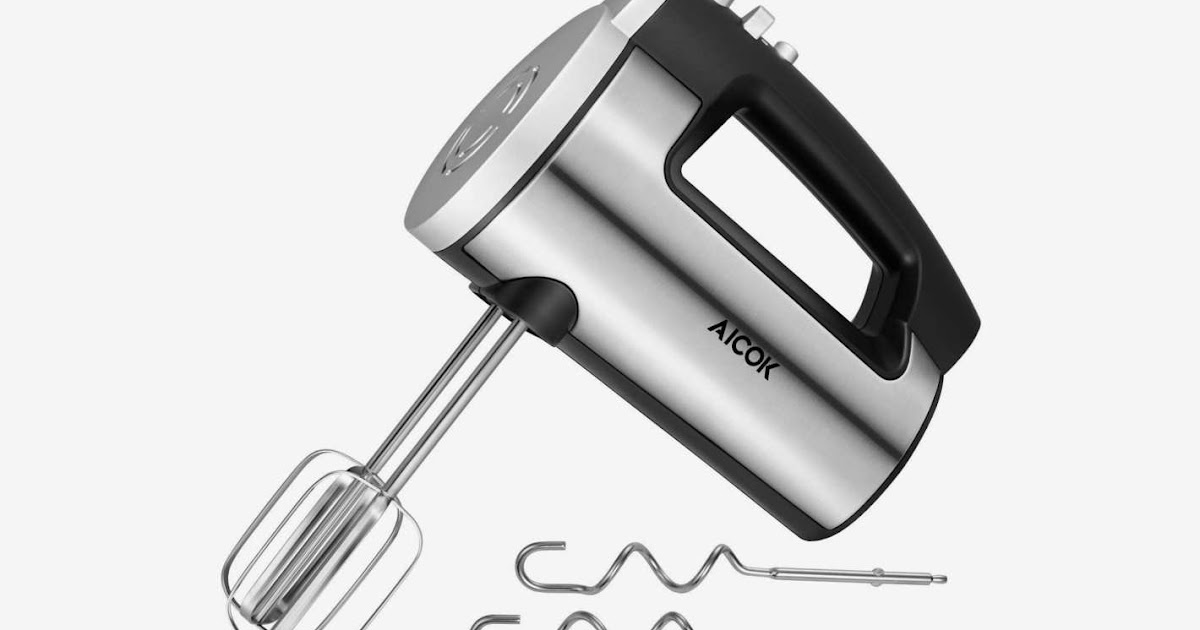How to prevent pipes bursting
Steps to reduce the risk of burst pipes
You can reduce the risk of burst or frozen pipes in your home by taking some precautions. If you own your home, you're responsible for insulating and protecting all inside pipework. In rented accommodation, landlords are responsible.
Preventing burst and frozen pipes
To help prevent your pipes from freezing, it's important to:
- know where the internal stop/tap valve is (usually under the kitchen sink) and how to turn it off
- keep the home as warm as possible even if you are out
- lag pipes in exposed or draughty places
- leave the trap door to roofspace open to let warm air flow in during extreme weather conditions when there is the chance that un-lagged water tanks and pipes could freeze
- see that taps are turned off properly
- have contact details for a plumber
You should:
- not use an electric, gas or paraffin heater in the roofspace
- become familiar with your water supply system now and find the main stopcock which turns off the water supply to your property
Frozen pipes
If you have a frozen pipe:
- put hot water bottles or a thick cloth soaked in hot water over the frozen pipe - when thawing, start at the end of the pipe nearest the tap and work away from it
- don't use a naked flame
Burst pipes
If a pipe bursts:
- turn off the main stopcock
- open all the cold taps to drain the system if the flow of water cannot be stopped
- if the burst is on a pipe from the storage tank, turn off the stop valve in the storage tank, turn on all hot taps to drain the system, allow the fire to burn out or turn the heating off until the burst pipe has been attended to by a plumber
Reporting a problem
If you are a Housing Executive tenant and need an emergency repair, you should contact your local district office during office hours.
You can also contact the Emergency Out of Hours Service in the evenings, weekends or holidays:
- telephone: 03448 920 901
- textphone: 0845 6504381
NI Water isn't responsible for burst pipes inside the home but can give some help. To contact Customer Services:
- telephone: 03457 440088
- textphone: 03457 023206
- type talk: 0800 0515 446
- email: [email protected]
You can report leaks on roads and footpaths using the freephone number:
- Leakline: 08000 282011
Customer Care Register
You can join the register if you:
- have a disability
- are old
- have a medical condition
- need extra help for another reason
- telephone: 08457 440088
More useful links
- Repairs to Housing Executive and housing association homes
- Local councils in Northern Ireland
- Scottish and Northern Ireland Plumbing Employers' Federation
- Contacting 08 and 03 telephone numbers
- Northern Ireland Water
Translation help
How to translate this pageHelp improve this page - send your feedback
You must have JavaScript enabled to use this form.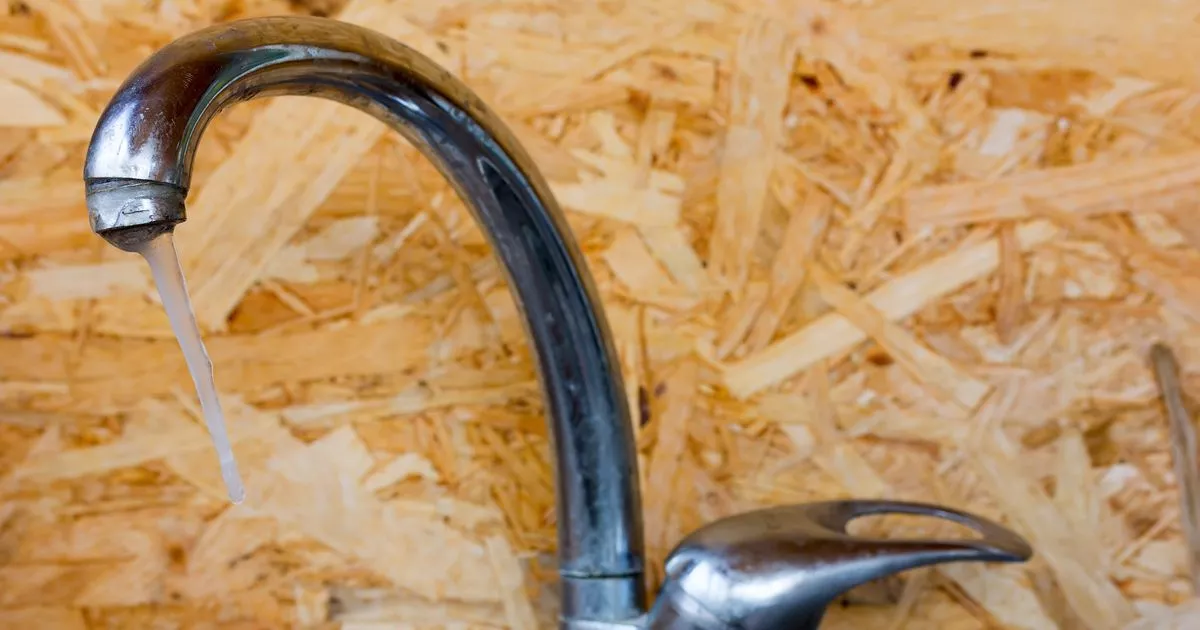
report a problem
leave feedback
ask a question
Report a problemWhich problem did you find on this page? (Tick all that apply)
A link, button or video is not working
There is a spelling mistake
Information is missing, outdated or wrong
I can't find what I'm looking for
Another issue
Messages
Tell us more about the problem you're having with the nidirect website.
Enter your feedback
What is your question about?Choose a topic for your question: - Select -AnglingBenefitsBirth certificatesBlue BadgeCareersCompensation due to a road problemChild MaintenanceCivil partnership certificatesCoronavirus (COVID-19)COVID vaccination certificateCriminal record checks (AccessNI)Death certificatesEducational Maintenance AllowanceEmployment rightsHigh Street Spend Local SchemeMarriage certificatesMotoringnidirect accountPassportsPenalty Charge NoticesPensionsPRONI - historical recordsRates or property valuationProblems with roads and streetsSmartpassMy question is about something else
What to do next
How to Keep Pipes From Freezing and Bursting
Photo: istockphoto.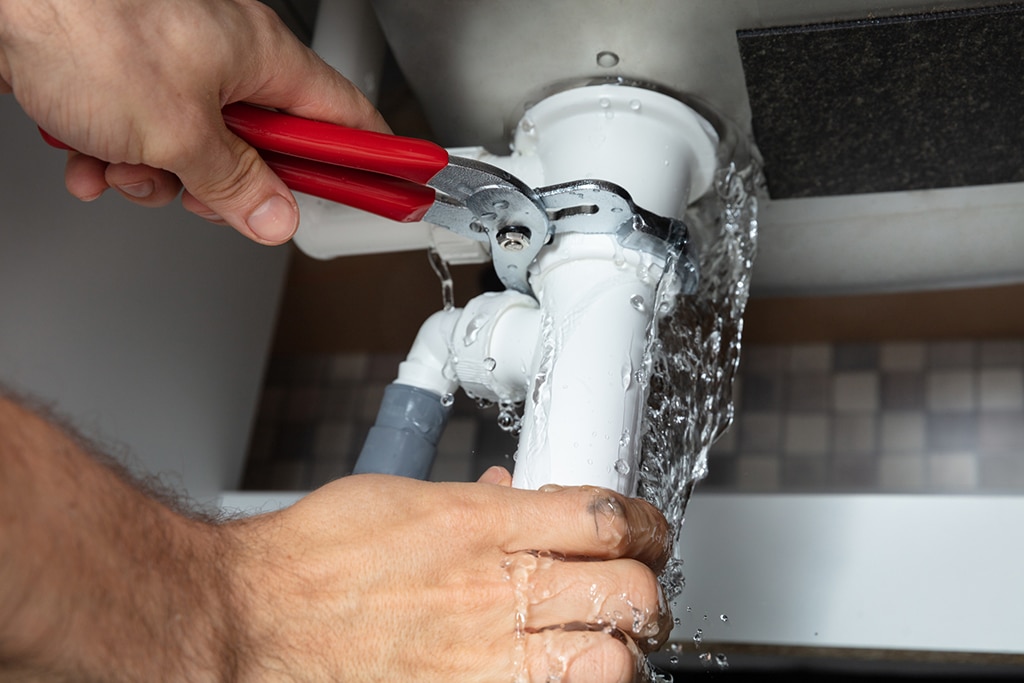 com
com
When severe winter weather threatens your home, one of the most important preventative measures you need to familiarize yourself with is how to keep pipes from freezing. Frozen pipes can crack or burst, and the resulting leaks can cost a fortune in repairs. That’s why the best time to winterize is before outdoor temperatures drop below freezing.
To keep bad weather from freezing pipes and avoid a plumbing headache, refer to the below info on how to protect pipes from freezing in the first place—as well as some helpful tips on how to thaw frozen pipes in a pinch.
What Happens if Your Pipes Freeze?Water expands as it freezes, and this process occurs in your plumbing when temperatures drop below 32 degrees Fahrenheit. Expanding ice puts pressure on both plastic and metal pipes until they cannot hold any longer, at which point they fail. Frozen water pipes that have cracked not only need to be replaced but, if they burst indoors, they can result in serious water damage within hours of thawing. In addition to opening the door for mold and mildew growth, leaks in cabinets, walls, and floors can cost homeowners thousands in cleanup and repairs.
In addition to opening the door for mold and mildew growth, leaks in cabinets, walls, and floors can cost homeowners thousands in cleanup and repairs.
The types of pipes most susceptible to freezing include outdoor spigots, swimming pool supply lines, and water sprinkler lines, but indoor pipes aren’t necessarily safe. Indoor plumbing in unheated areas—basements, crawl spaces, attics, garages, exterior walls, or even kitchen cabinets—isn’t well protected against freezing temperatures, either.
How to Prevent Frozen PipesPhoto: istockphoto.com
Seasonal water damage to your home can be avoided altogether if you follow these tips on how to prevent pipes from freezing.
Know your pipes’ and shut-off valve’s locations, and do preventative maintenance.Frozen pipe prevention and prep begins with identifying where your plumbing leads throughout the home and locating your main water shut-off valve. (The exact spot may vary depending on the age of your house, but likely locations are the garage, basement, laundry room, or yard.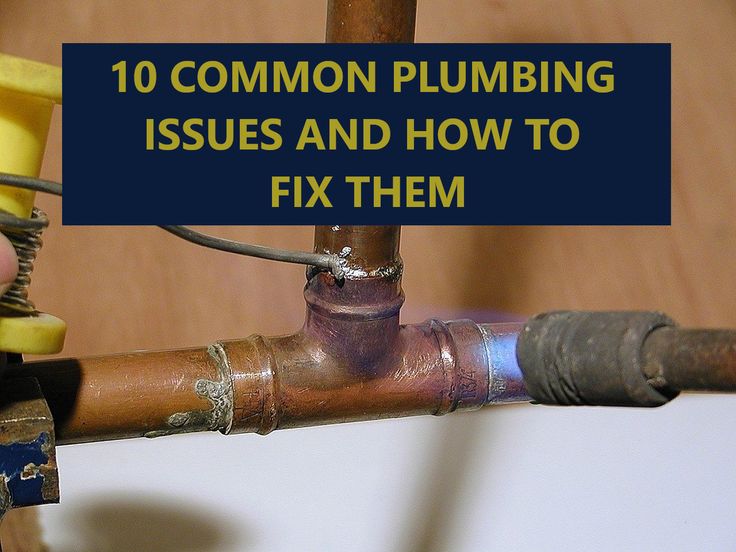 ) Each year, it’s recommended to have your plumbing and heating systems serviced by pros so you can stay on top of small problems before they turn into larger issues during a freeze.
) Each year, it’s recommended to have your plumbing and heating systems serviced by pros so you can stay on top of small problems before they turn into larger issues during a freeze.
Winterizing your home and landscape is crucial when determining how to keep outdoor water pipes from freezing. Each fall, homeowners should completely drain any outdoor water lines to swimming pools and sprinkler systems, and disconnect and drain hoses and close valves on outdoor hose bibs.
Despite the chemical’s name, you should never put antifreeze in outdoor water supply lines. Antifreeze does not prevent frozen pipes, and it’s potentially harmful to your landscape, children, pets, and wildlife.
Photo: istockphoto.com
Insulate at-risk pipes and under-insulated areas of the home.Pipes in unheated exterior walls, basements, crawl spaces, and garages should be insulated with rubber, fiberglass, or foam pipe insulation. Along with the best pipe insulation to prevent freezing you can find, properly insulating rooms and addressing gaps in drafty windows should also help to keep your indoor plumbing at or above the minimum temperature to keep pipes from freezing.
Along with the best pipe insulation to prevent freezing you can find, properly insulating rooms and addressing gaps in drafty windows should also help to keep your indoor plumbing at or above the minimum temperature to keep pipes from freezing.
If you know that a cold snap is headed your way, leave a couple of faucets running at a trickle in the coldest areas of the house (where pipes would most likely freeze). This age-old trick is effective since the water flow can prevent pipes freezing.
Leave sink cabinet doors open to warm indoor pipes.Open the cabinet doors under kitchen and bathroom sinks to expose cold pipes to warm air. To that end, be careful not to close off any indoor pipes from heat in cold areas of the home. During the coldest times of the year, plugging in space heaters to run on a low setting in these problem areas doesn’t hurt, either.
Photo: istockphoto. com
com
Never completely turn off the heat on days or nights that dip below freezing, even if you’re out of town. Shutting down your HVAC system could put your pipes at a much greater risk of freezing—and even bursting—and the water damage you return home to could be extensive.
Install a hot water recirculating pump.A hot water circulating pump monitors a plumbing system’s water temperature. Connecting to the house’s hot water heater, this device automatically circulates warm water through the hot and cold water lines whenever temperatures drop below a predetermined benchmark. This device saves you from having to address particularly cold sections of indoor plumbing on your own.
Get a freeze alarm so you’ll have time to take measures before pipes freeze.Consider also installing a freeze alarm, and set it so that it sends an alert to your phone when indoor temperatures drop below 45 degrees Fahrenheit.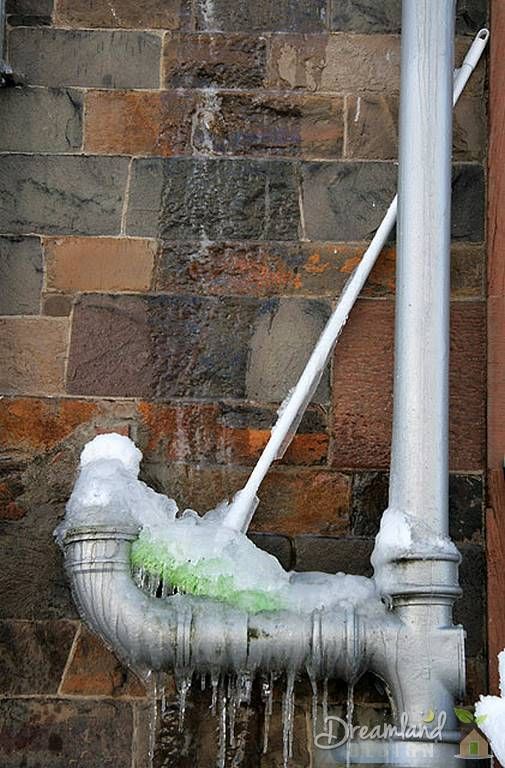 This will provide you with more time to warm areas at high risk of frozen pipes.
This will provide you with more time to warm areas at high risk of frozen pipes.
Photo: istockphoto.com
How to Thaw Frozen PipesIf your best efforts to keep pipes from freezing weren’t enough to combat the cold, don’t panic: These instructions on how to thaw frozen pipes will help minimize (or avoid) any water damage. Should you discover one or more burst pipes as you are thawing, turn off your water main and call a plumber.
STEP 1: Locate the frozen pipe(s).If you suspect one or more of your pipes has frozen, fully open your home’s faucets one by one. If any of the spigots produces just a small trickle of water, it is a sign of frozen plumbing.
STEP 2: Keep the affected faucet(s) open.Unless you’ve spotted a burst pipe, keep any faucet that runs at a trickle turned on. This will help melt the ice in the pipe while you continue to work on thawing it from the outside.
RELATED: 10 Emergencies Every Homeowner Should Know How to Handle
STEP 3: Apply heat to frozen sections of pipe.
For exposed plumbing that has frozen, there are several approaches to the matter of how to thaw frozen pipes. These heating methods—none of which involve an open flame—include:
- Wrapping frozen pipe sections with an electric heating pad
- Safely positioning (and, if needed, repositioning) a portable space heater near frozen pipes
- Blanketing pipes in hot water-soaked towels, reheating and rotating them out as needed
- Using a hair dryer set to its highest heat setting on frozen pipe sections
If your frozen pipes are in an enclosed space or behind walls, calling a plumber is highly recommended. If a professional service call is not an option, one thing you can do that might help thaw indoor pipes is to turn up your home’s thermostat. It can’t hurt! Otherwise, it’s time to let a pro diagnose and fix any frozen pipes.
Final ThoughtsKnowing how to keep pipes from freezing is a bulwark against some of the worst damage cold weather can inflict against a home. It’s unique in that it involves a mix of regular home winterization, such as draining outdoor pipes, and on-the-fly adjustments, like leaving faucets running at a trickle, that can only be made once you know a freeze is approaching. Even the most cautious preventative maintenance guru out there isn’t immune to an occasional frozen pipe or fixture, so it’s just as important to also understand how to thaw frozen pipes in case those best-laid plans freeze over.
It’s unique in that it involves a mix of regular home winterization, such as draining outdoor pipes, and on-the-fly adjustments, like leaving faucets running at a trickle, that can only be made once you know a freeze is approaching. Even the most cautious preventative maintenance guru out there isn’t immune to an occasional frozen pipe or fixture, so it’s just as important to also understand how to thaw frozen pipes in case those best-laid plans freeze over.
Some jobs are better left to the pros
Get free, no-commitment estimates from licensed plumbers near you.
Find Pros Now
+How to avoid pipes freezing without heating
How to choose How to mount or connect How it works Reviews, releases, tests Energy saving at home This is interesting
Before frost
At zero and negative temperatures
If your pipes are still frozen
If you are not at home
We want to remind you that freezing temperatures for extended periods can cause pipes in vulnerable areas to freeze and burst, leading to costly repairs.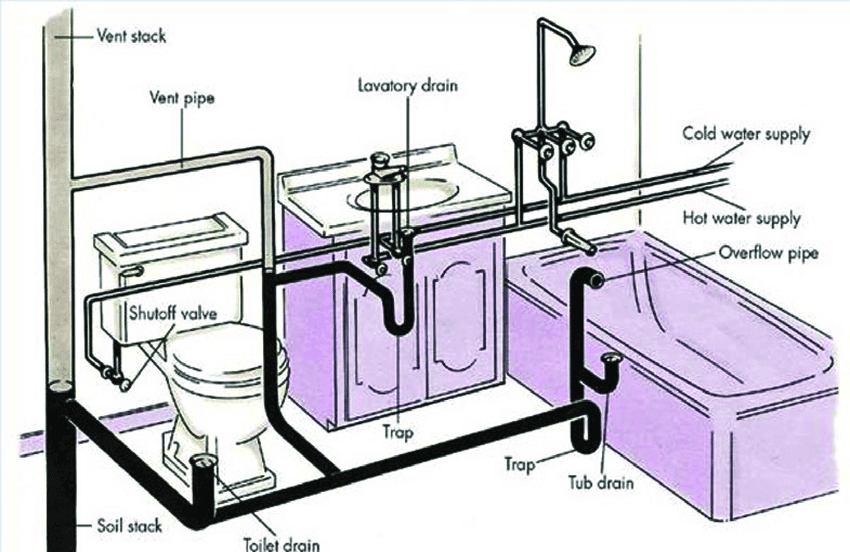 By taking certain preventive steps, you can stop worrying about frozen pipes and costly repairs in your home and outdoors. Let's talk about these steps in more detail.
By taking certain preventive steps, you can stop worrying about frozen pipes and costly repairs in your home and outdoors. Let's talk about these steps in more detail.
Before frost
Determine which places in your home (basements, undergrounds, unheated rooms and street walls) are most prone to freezing. Pipes behind washing machines and dishwashers are dangerous if they are installed along street walls.
Eliminate sources of cold air near water pipes: fix broken windows, insulate walls, close underground vents and eliminate drafts from under the door.
Familiarize yourself with the location of the main shut-off valve so that in the event of a pipe rupture, be able to close them immediately.
Protect your pipes: wrap them with thermal insulation and preferably heat them with a heating cable. Newspapers or fabric as thermal insulation can also work. If the pipe runs openly along the street, do not clean snow off it - snow has heat-insulating properties, it is warmer under it.
Outdoor faucets are the most susceptible to freezing. They need to be insulated especially carefully. And disconnect from them hoses for watering, etc.
A useful thing in the fight against freezing pipes is a hot water recirculation system.
At zero and negative temperatures
The first sign of water freezing in pipes is a drop in water pressure in faucets, faucets, etc.
In pipes most susceptible to freezing, you can leave a small flow of water (like a trickle with a faulty toilet bowl). A constant flow of water will prevent freezing. The cost of wasted water will be lower than repairing a broken pipe.
Open the hatches of the water distribution cabinets to supply room temperature air to the pipes, preventing them from freezing.
If your pipes are still frozen
Shut off the water supply to your home immediately. Do not try to defrost the pipes until you turn off the water. Freezing pipes often results in invisible damage to them and their joints.
Apply heat to the pipes by heating the air around them or by heating the pipes themselves. You can use a hair dryer, electric convector or hot water. Do not leave the convector unattended. Avoid using diesel and gas heaters and open flames.
Open faucets and faucets and start defrosting pipes from them so that the resulting water can drain.
After defrosting the pipe, feed water into it slowly and check for leaks.
If you are not at home
Encourage a friend, relative, or neighbor to regularly check that the heating in your home is working and that the pipes are not frozen.
Install a cellular gateway with a temperature sensor that will send an SMS to a given number if the temperature in the house drops.
Source: teplo-spb.ru
Key words: pipe freezing, pipe heating
Reviews
Add review
Rate the product
How to quickly defrost pipes in the country? All methods
If you live in a private house all year round and there is water movement through the pipes, there is little risk that they will freeze in winter.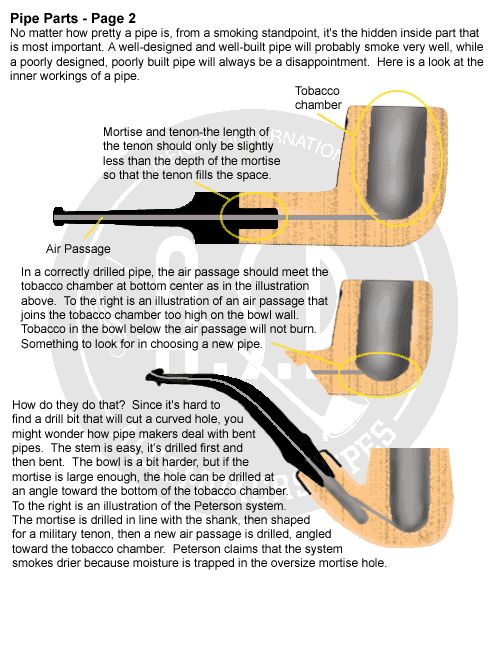 But many summer residents leave their plots in the winter, coming only for weekends or holidays. And then frosts become the causes of unpleasant moments. You turn on the water, but it does not flow or go into the sewer system.
But many summer residents leave their plots in the winter, coming only for weekends or holidays. And then frosts become the causes of unpleasant moments. You turn on the water, but it does not flow or go into the sewer system.
Legion-Media
We tell you how to protect pipes in the country in winter so that they do not freeze and fail. And what to do if it still happened?
Contents of the article
How to prevent the pipe freezing problem?
To avoid problems, you need to follow the main conditions: heat either the pipes themselves or the rooms where they are located. Lay the pipeline below the freezing level of the soil and properly insulate it. Moreover, it must be taken into account that the degree of soil freezing is affected not only by the region of residence and the strength of frost, but also by its density and humidity.
If you approach the installation of utilities initially illiterately, then in winter this problem will occur regularly. The pipes may be in a cold basement or they may not be insulated at all, and then the water in them is guaranteed to freeze. In addition, there are unforeseen situations associated with ruptures of pipes or fittings. And sometimes it also happens that you accidentally chilled the room, for example, you didn’t close the door to the boiler room where the pipes are located, and the water froze at night.
The pipes may be in a cold basement or they may not be insulated at all, and then the water in them is guaranteed to freeze. In addition, there are unforeseen situations associated with ruptures of pipes or fittings. And sometimes it also happens that you accidentally chilled the room, for example, you didn’t close the door to the boiler room where the pipes are located, and the water froze at night.
For central Russia, the recommended depth of the pipeline is 1.5 m. But the freezing depth in February-March can reach 1.8 m.
But what about those who did not foresee the correct laying in advance, bought a ready-made country house and are forced to use what they have, and also come to the dacha a couple of times a month?
ADVERTISING - CONTINUED BELOW
If the problem is small and the frosts are not so strong, you can get by with improvised means. When everything is difficult, we advise you not to experiment and call specialists.
Where do pipes most often freeze?
Most often, a part of the water pipe freezes where the pipe comes out of the ground and enters the house. The fact that water does not flow through the tap into the house is unpleasant, but not so dangerous. Much worse, when it freezes, it increases in volume by about 10% and can break the pipe. As a rule, the rupture occurs at the joints - at the fittings, but the pipe itself may not withstand. As soon as you understand where it is frozen, proceed to defrosting. It can be of two types: in foreign i and to internal.
Experienced plumbers believe that quality pipes can withstand 3-4 freezes, and then there are no guarantees. Well, if the house and pipes are old or of poor quality, they can burst right away.
What should I do if the pipes are frozen?
Before you start defrosting water in a private house, you need to fully open all shut-off valves.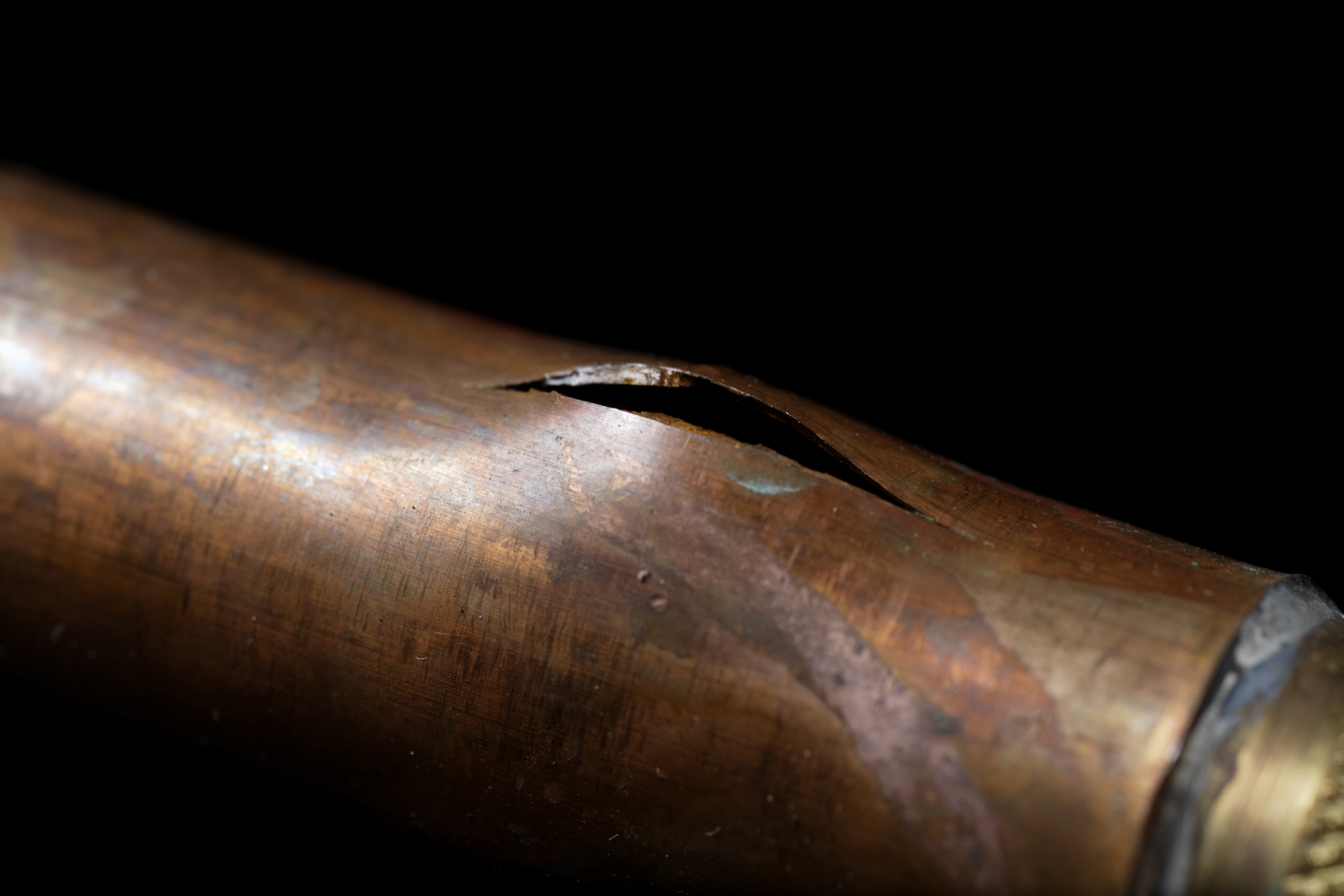 Water must be able to move freely through the pipeline and flow out of the taps. Open the nearest faucet and watch the water flow.
Water must be able to move freely through the pipeline and flow out of the taps. Open the nearest faucet and watch the water flow.
Just in case, it is worth keeping a fan heater, a technical hair dryer, a heat gun or a regular convector in the house, just in case, so that in an emergency you can quickly defrost communications.
Heat gun and fan heater
When pipes are frozen, melt the ice inside them. Indoors, it is best to do this with a fan heater, it works the fastest. If not, then any electric heater will do. If the pipes are frozen over a large area, you cannot do without a gas heat gun.
A fan heater or a gun is directed at the pipes and turned on at full power, it is important not to lean the heaters against the pipes: the plastic can simply melt.
Builder
The advantage of the Builder is that a directed stream of hot air penetrates narrow gaps. This is convenient when you need to defrost a pipe passing through a wall or foundation. As with the gun, you need to keep a distance so as not to melt the plastic pipes.
As with the gun, you need to keep a distance so as not to melt the plastic pipes.
Hot water
Hot water can be poured into a hose with a smaller diameter than the pipe itself. The hose will need to be pushed inside the pipeline until it rests against the ice plug, and then hot water is pumped into it. It quickly melts the ice, and the hose moves further as the track thaws. As soon as water flows from the tap, the ice plug melts.
You can also try pouring hot water on the pipe itself, if it is not somewhere underground. To do this, first wrap the pipe with a rag, and only then pour boiling water on it. If the site is large, the process may take several hours.
Heating cable
You can use a dedicated plumbing cable for defrost. If this is not the case, it can be replaced with a heating cable that fits into the electric floor heating system. But it is better to buy such a tool and keep it always at hand. The cable is wrapped around the frozen section of the pipeline and plugged into the outlet. Usually, in 2-3 hours, you can defrost a fairly long water supply in 2-3 hours.
Usually, in 2-3 hours, you can defrost a fairly long water supply in 2-3 hours.
A special heating cable can (and should) be left permanently: it is laid along the pipe, and wrapped with thermal insulation on top. On one side, the cable is connected to the outlet. But it is best when the heating cable is self-regulating, that is, it determines the degree of heating itself depending on the ambient temperature. It does not consume much electricity and reliably protects pipes from freezing.
There are also cable heating systems, when the cable itself is inserted into the pipe and heating takes place from the inside. This is very convenient, and it will take less time to remove the ice plug.
Esmarch mug
In the absence of any special devices and devices, there is the easiest way. All you need is a long hose and an Esmarch mug (large enema). Hot water is poured into the mug, the hose is inserted into the frozen pipeline to the stopper. The tap opens and hot water flows to the frozen place.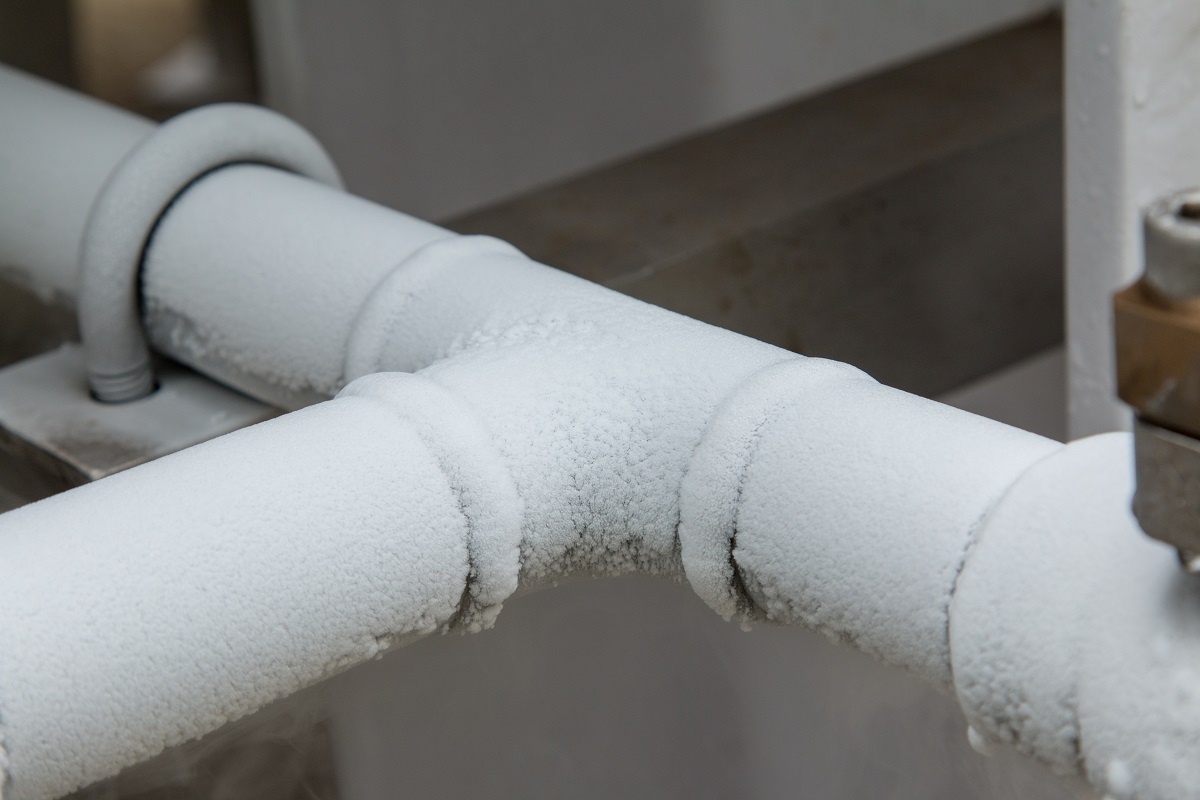
What if you can't manage on your own?
In severe cases, you need to use special equipment, but for this you will have to call specialists. There are autoclaves: these are special installations that operate on the basis of boiling water. A hose is inserted into the water pipe, connected to an autoclave, through which steam from boiling water enters the route.
Hydrodynamic machine is also professional equipment, which is based on the process of heating water and supplying it under pressure inside the water line. If the water inlet to the house or the entire route is frozen, then with their help it is possible to warm the pipes in a few minutes.
What to do if the sewer system is frozen?
An ice block in a sewer drain pipe in a private house is also not uncommon. It happens that the water gradually leaves, or an ice plug has formed recently, then the simplest thing is to pour hot water at a temperature of +70 °C into the sewer.



